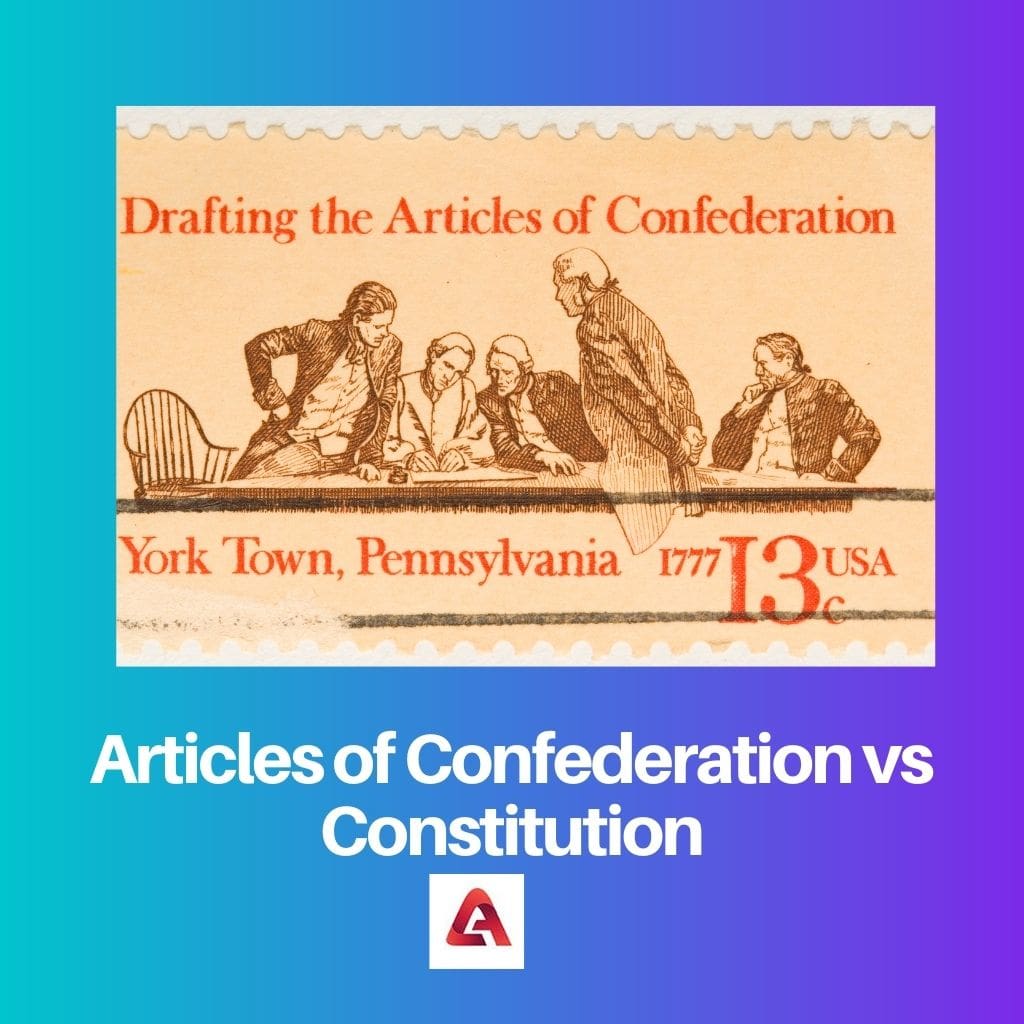The articles of Confederation and the Constitution are two known documents that note the American Revolution’s changes. The regulations of the Articles of Confederation were accepted and signed by the 13 states of the United States of America.
The Articles of Confederation and Perpetual Union was the agreement that the 13 states of the United States agreed to follow. This was considered their earliest constitution.
The constitution in India is the longest one containing 444 articles, making it the largest democracy. Individual institutions can also implement constitutions to prescribe the rules for them.
Key Takeaways
- The Articles of Confederation was the first governing document of the United States, while the Constitution replaced it as the supreme law of the land.
- The Articles of Confederation established a weak central government with limited powers, while the Constitution created a strong federal government with checks and balances.
- The Articles of Confederation lacked provisions for an executive branch and federal judiciary, whereas the Constitution established a clear separation of powers among the executive, legislative, and judicial branches.
Articles of Confederation vs Constitution
The difference between the Articles of Confederation and the Constitution is that the Articles of Confederation are the rules that the United States of America agreed upon in the 18th century. In contrast, the constitution is the rule that democratic countries and other legalized institutions develop to implement law and order in their body.

Comparison Table
| Parameter of Comparison | Articles of Confederation | Constitution |
|---|---|---|
| Codification of law | It followed unicameralism, which is having a single chamber in the parliament. | The constitution follows bicameralism; the parliament is divided into two chambers. |
| Voting power | Each state had a single vote according to the Articles of Confederation. | Each legislative representative has a vote in the parliament according to the constitution. |
| Distribution of power | The Articles of Confederation distributed the power between many unions. | The constitution divides the power between subordinates, but the ultimate power resides with the central authority. |
| Bill of rights | The citizens could not claim the Bill of Rights under the Articles of Confederation. | The Constitution considers everybody equally; hence, citizens can claim the Bill of Rights. |
| Law enforcement | 9 out of 13 states should have supported the law to enforce it everywhere. | Both houses of parliament must keep the law to amend it in a country. |
What are Articles of Confederation?
The Articles of Confederation and the Perpetual Union was a bond signed between 13 states in the United States of America. It consisted of the rules that were to be followed by these states in the 18th century.
The Articles of Confederation was a written document that embellished the idea of introducing a friendly bond between the states. This process was a long one.
The committee included 13 people to finalize the draft. John Dickinson was the head of the committee, and he presented the final draft of the Articles of Confederation on 12th July 1776.
Virginia ratified the Articles of Confederation, followed by the others in the early 1779s. But these articles gave minimum power to the central government, so an unstructured central government headed it.
What is Constitution?
The Constitution of a country is the collection of all the rules and regulations that a citizen must obey. A group makes this of people trusted by the government because of their social knowledge.
This is a document where the principles are written by considering the entity’s behaviour. If the constitution is written in a single comprehensive unit, it is known as a codified constitution.
Anybody who intends a systematic and organized working structure can create the constitution they need. A form is the backbone of a democratic country, so the power is divided among different departments.
The constitution considers the central government as the epitome of powers. The central government can decide or nullify the laws that the state government implied.
Main Differences Between the Articles of Confederation and the Constitution
- According to the Articles of Confederation, citizens could not claim the Bill of Rights. Anyone can claim their rights according to the constitution.
- If 9 out of 13 states accepted a law, it was brought to act by the Articles of Confederation. The constitution demands that both houses pass the law to enforce it on the public.



